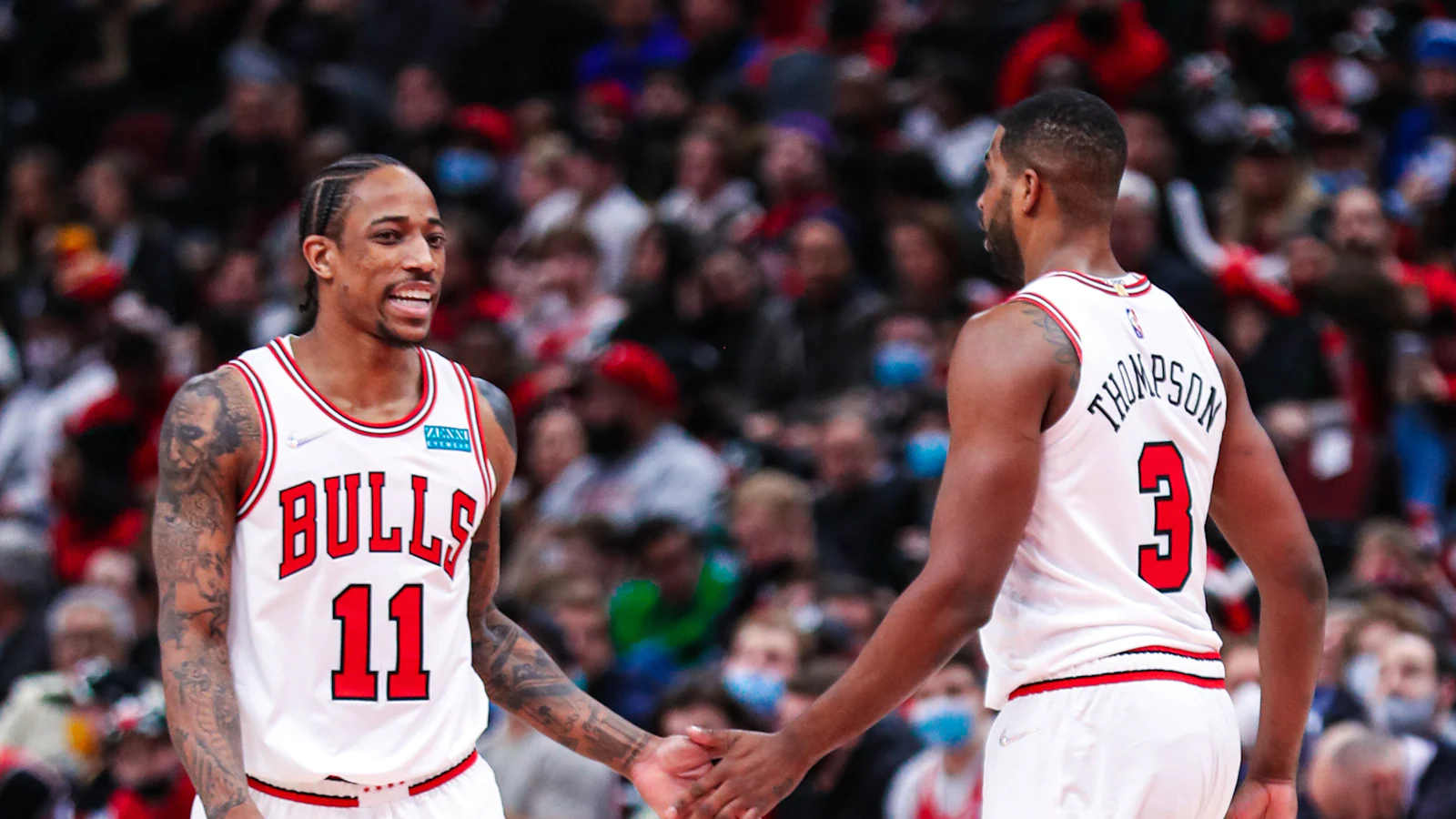In a few weeks, the Chicago Bulls might *finally* field a healthy team. Lonzo Ball, Alex Caruso, and Patrick Williams have been sorely missed while injured. Fortunately, they are all expected to return by the end of March. The return of these three players will work wonders for the team, especially on the defensive side of the ball. However, all three of these players are expected to take up significant minutes. This begs the question: who’s out of the rotation when they come back? In addition, who sees a reduction in playing time? Let’s dive into what the Bulls’ rotation might look like when the team is fully healthy:
Starter-Like Minutes

Four players — Lonzo Ball, Zach LaVine, DeMar DeRozan, and Nikola Vucevic — should consistently play 30-34 minutes per game on a healthy Bulls team. Currently, all four are averaging at least 33.9 min/game. This number should decrease once the team is fully healthy.

Once the Chicago Bulls’ rotation is back to what it was meant to be, I wouldn’t be surprised if LaVine and DeRozan see slight minutes decreases. LaVine is dealing with a lingering knee injury, so he may need more rest down the stretch. DeRozan, who averaged 38.5 minutes/game in February, could also use a break
Furthermore, Ball and Vucevic may get more time on the bench than originally planned for this season. The surprise emergence of rookie Ayo Dosunmu as a strong defender and capable facilitator will force Billy Donovan to give him minutes (more on that later). This should, in turn, take out a small chunk of Ball’s workload. In addition, the Bulls recently brought in veteran big man Tristan Thompson. This could lead to a slight minutes reduction for Vucevic, who averaged over 35 minutes/game in February. The team may want to give Vucevic, 31, some much-needed rest before (hopefully) embarking on a deep playoff run.
Consistent Playing Time

This is where things start to get interesting. The Bulls have three bench guards — Alex Caruso, Coby White, and Ayo Dosunmu — who should all get a good share of minutes during any given game. This will likely force Billy Donovan to use three guard lineups at some point. This strategy worked very well for Donovan in his last year in Oklahoma City. There, he utilized lineups featuring a three-headed-monster of Chris Paul, Shai Gilgeous-Alexander, and Dennis Schroder.
Patrick Williams will, when healthy, start for the Bulls. But how many minutes does he get, especially if he struggles early on? He’s a talented player, but he’s also a second-year player coming off an injury. Last year’s iteration of the team could afford to give Williams crucial minutes for development’s sake. However, as a team with championship aspirations, the Bulls may give Williams a short leash with other options waiting.
The Bulls have several starting options if Williams struggles. Though Derrick Jones Jr. and Javonte Green haven’t exactly been superstars in Williams’ absence, they’ve filled in admirably. Defense and athleticism have been Williams’ calling card in the NBA, as his shooting has yet to become consistent. Green and Jones provide similar skillsets, which bodes well for lineup versatility. Ideally, Williams looks like his pre-injury self (or perhaps an even better version of that player). In that case, this logjam at the 4 becomes a much better problem to have. An improved Patrick Williams could be the missing piece for this Bulls team.
Finally, Tristan Thompson should see the floor for a consistent amount of time each night. Though he likely won’t dig too far into Nikola Vucevic’s minutes, his only real competition for backup reps is Tony Bradley. Bradley, in the few games Thompson has played for the Bulls, has seemingly exited the rotation.
Out of the Rotation

There are three players who have played significant minutes at one point or another this season who I expect to become reserves once the team is healthy: Troy Brown Jr., Matt Thomas, and Tony Bradley.
Tony Bradley has caught a lot of negative attention from Bulls fans as an ineffective backup to Nikola Vucevic, but he actually performed well defensively at times. Opposing players shot 17% worse within 6 feet of the rim when Bradley was on the floor. Though Bradley’s sample size is obviously much smaller, that mark is better than some of the league’s best defenders, including Jarrett Allen (-15%), Jaren Jackson Jr. (-13.7%), and Rudy Gobert (-11.1%). However, barring an injury to Vucevic or Tristan Thompson, Bradley lacks a clear path to playing time on the Bulls this season.
Entering this season, Troy Brown Jr. had the potential to be a key bench player for Chicago. Despite flashes of quality play, Brown has been inconsistent this season. Like Tony Bradley, barring injury, he just doesn’t have a place on a team with hopes of making a deep playoff run, especially one with as deep of a roster as the Bulls have.
Lastly, we have Matt Thomas, arguably the most-hated player on the Bulls this season. Despite shooting 38% from beyond the arc, Thomas’s season has been marred by poor, almost Denzel Valentine-esque shot selection and sub-turnstile-level defense. Hopefully, once this Bulls team is healthy, Thomas won’t see the floor outside of 20+ point blowouts. As a 6’4″ guard, he doesn’t even fit a positional need depth-wise, since, as I stated earlier, the Bulls already have a lot of mouths to feed at guard.
Final Thoughts
Overall, the return of the Bulls’ injured players should provide a much-needed spark down the stretch. Not only will they solve some of the team’s defensive woes, but they should also help highlight the Bulls’ strong depth.
